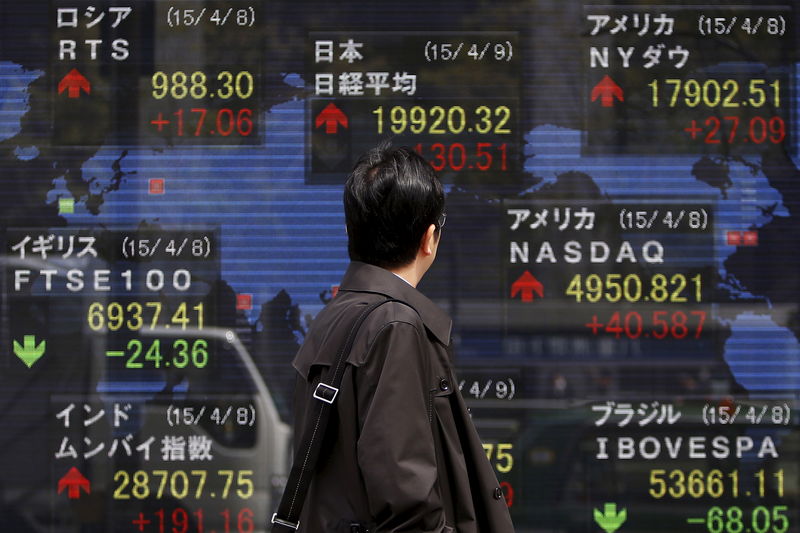Street Calls of the Week
Investing.com - Asian Pacific markets are predicted to extend their decline on Friday's opening, influenced by Wall Street's retreat in response to stronger-than-expected labor data and mixed commentary from the Federal Reserve.
As of 9:50 am AEST (11:50pm GMT), the S&P/ASX 200 declined by 1.4%, while Nikkei 225 Futures also indicated a lower opening with a 70 point drop.
U.S. stocks closed broadly lower, with the Dow Jones Industrial Average falling by 250 points to 33414, while the S&P 500 and NASDAQ Composite decreased by 0.8% to 4278 and 1% to 13186 respectively.
Midday rallies were observed after Federal Reserve Chair, Powell, suggested that a further interest rate hike in November was unlikely. However, concerns about inflation persist as policymakers tread carefully.
In the commodities market, Brent crude oil saw a 1.7% increase to US$93.21 a barrel, while gold prices lifted 0.4% to US$1,989.2.
Among yields, the yield on Australian 2 Year government bonds was at 4.289%, with the 10 Year yield also increasing overnight to 4.987%. U.S. Treasury notes followed suit with the 2 Year yield at 5.152% and the 10 Year yield at 4.987%.
Among currencies, the Australian dollar, Indonesian Rupiah, Vietnamese Dong and Thai Baht ticked 0.1% lower while the Korean Won was steady. The US Dollar Index slipped 0.3% to 106.25.
In Asia, Chinese shares experienced a downturn with the Shanghai Composite Index falling 1.7% to 3005.39, marking its lowest level this year. Investor sentiment remains low, primarily due to the ongoing struggles of the property sector, which continues to hamper China's economic recovery.
Hong Kong shares also closed lower, with sentiment influenced by the recent data revealing a decline in September home prices and Country Garden's ongoing debt crisis.
Japanese stocks closed lower as well, with electronics and pharmaceutical stocks leading the decline, fueled by concerns over increased energy and borrowing costs due to the Middle East conflict. Indian shares followed suit, with steel and tech stocks weighing down the market.
In Europe, markets declined as losses in property and packaging stocks overshadowed gains in the drinks, luxury-goods, and financial sectors. The Stoxx Europe 600, DAX, and CAC 40 all experienced losses.
